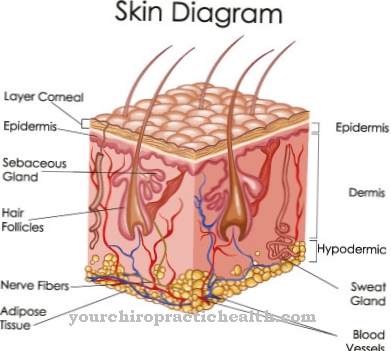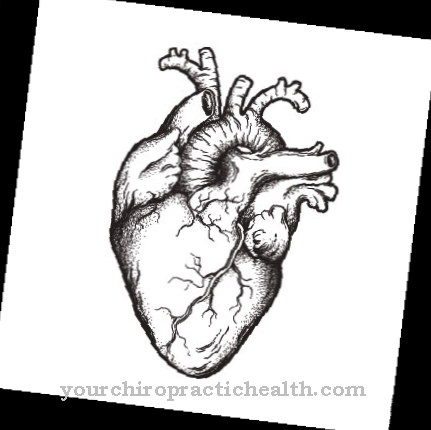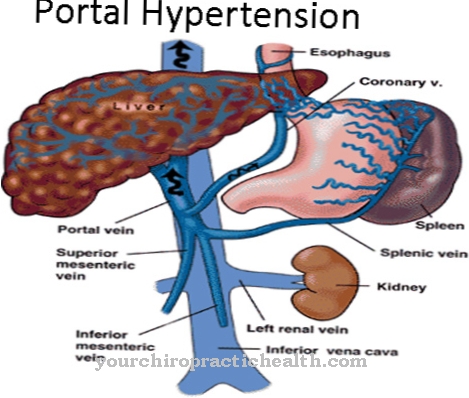As Ear canal exostosis are benign bone growths in the bony, back part of the external auditory canal, which lead to a narrowing or even obstruction of the auditory canal. Individual solid growths or several smaller pearl-like structures can develop. One of the most common causes is irritation of the periosteum in the external auditory canal due to cold water, because the disease is very common among surfers, for example.
What is ear canal exostosis?

© Henrie - stock.adobe.com
The first third of the external auditory canal (Meatus acousticus externus) consists of a cartilaginous, elastic substance and further inside of bony structures. Benign growths (hyperostosis) can occur in the bony part of the auditory canal, which narrow the external auditory canal or, in extreme cases, completely block it.
Because such bony formations only occur in the inner part of the external auditory canal, they are often in the immediate vicinity of the eardrum. The benign exostosis of the ear canal must be differentiated from other benign or malignant tumorous growths in or on the external ear canal, which, however, are very rare.
The pathological changes in the meatus acousticus externus are very common among surfers and apnea divers, so that the term is used in Anglo-Saxon parlance Surfer’s ear naturalized. The constrictions in the ear canal, which are caused by one or multiple exostoses, can be easily seen with an otoscope.
causes
The exact causes of ear canal exostosis are not (yet) all known. It is believed to be an acquired, multifactorial disease. Special genetic dispositions are considered unlikely. One of the main causes of ear canal exostosis appears to be the frequent penetration of water into the external ear canal.
Up to 70 percent of surfers who practice their sport intensely are affected by such bony growths in their external auditory canals. Cold water surfers seem to be more vulnerable than surfers, who predominantly practice their sport in tropical regions. This means that cold water exerts a stronger stimulus for the formation of exostoses than relatively warm sea water.
This promotes the hypothesis that it is actually some kind of protective mechanism to keep cold water away from the eardrum. It is also noteworthy that hooded seals living in arctic waters, for example, regularly develop ear canal exostoses to protect their hearing.
Symptoms, ailments & signs
The first signs and symptoms that could indicate an exostosis of the ear canal are relatively unspecific, such as water remaining in the ear canal after bathing or showering or ear wax (cerumen) that does not empty itself from the ear canal and frequent ear canal infections.
Occasionally, complaints that occur when wearing hearing protection can also indicate a growth in the ear canal. Conductive hearing loss is often the complaint when the external auditory canal is severely narrowed or completely blocked by cerumen or water. In many cases, the signs and symptoms are so minor that they are not consciously perceived and the auditory canal exostosis is more likely to be noticed by chance during another examination with the otoscope.
Diagnosis & course
Ear canal exostosis is benign bone hyperplasia in the bony part of the external ear canal. The bony formations themselves do not cause any systemic problems. They can be diagnosed relatively easily by eye with the otoscope. A more detailed examination using computed tomography is usually not necessary.
The real problems arise from the physical constriction or even complete obstruction of the meatus acousticus externus. This can lead to secondary problems such as hearing loss and a susceptibility to inflammation. The course of the disease depends mainly on the course of the irritation of the periosteum in the ear canal. This means that the hyperplasias will continue to grow as long as, for example, the constant penetration of (cold) water continues.
If the disease is discovered before symptoms develop, the further course can be stopped if preventive measures such as the use of suitable ear plugs or other suitable protective measures prevent water from entering the ears. If no such measures are taken and the irritation of the periosteum persists, the bony hyperplasias increase further up to the complete obstruction of the external auditory canal.
Complications
The ear canal exostosis causes growths in the area of the ear canal. Different complications that affect the ear can arise. In the worst case, the person affected will lose all of their hearing or suffer from severe hearing loss.
Inflammation of the ear canal can easily occur, especially after bathing and showering or after visiting the swimming pool. These are associated with severe pain. It is not uncommon for pain from the ears to spread to the head or teeth. The quality of life decreases significantly due to the exostosis of the ear canal.
Furthermore, the symptoms can also occur when the patient is wearing hearing protection. This may mean that certain work or activities are no longer possible, so that the everyday life of the person concerned is also restricted. For many people, sudden hearing loss leads to mental health problems and depression. Treatment is usually always necessary because the ear canal exostosis does not go away on its own.
Operative interventions are used for this. In most cases, hearing loss cannot be reversed, so that the person affected will suffer from it for their entire life. Contact with cold water should also be avoided. Life expectancy remains unchanged due to the exostosis of the ear canal.
When should you go to the doctor?
If it is not possible for the affected person to remove the water they have absorbed in the ear after bathing, showering or swimming, he should consult a doctor. Before doing this, you should try to carefully remove the water from your ear yourself by hopping on one leg and tilting your head. If this does not succeed over several days despite numerous efforts, a doctor should be consulted. If you experience numbness, unusual noises in your ears or a feeling of pressure in your ear, it is advisable to consult a doctor.
If there is pain in the ears, if hearing loss sets in, or if warning signals from the surroundings can no longer be heard as usual, the symptoms must be clarified. If the symptoms increase in intensity or if they spread further, you must see a doctor. If there is a headache, a feeling of pressure inside the head, a skin sensitivity on the ear, skin changes, redness and swelling, a doctor is needed.
If fears develop, social withdrawal occurs or sporting activities can no longer be carried out as usual, a doctor should be consulted. A doctor must be asked for help if there are disturbances in balance, unsteady gait or dizziness. The general risk of accidents increases and should be minimized by clarifying the causes.
Doctors & therapists in your area
Treatment & Therapy
The course of an exostosis of the ear canal can be stopped by eliminating the cause, but the already existing hyperplasias do not regress. There are also no drugs that, if taken, would lead to the regression of the bony formations.
If the constriction of the external auditory canal does not pose a risk of secondary damage such as an increase in the frequency of inflammation or conductive hearing loss, no further therapy is necessary except for the recommendation to have an otoscopy performed at regular intervals. If a reduction or complete elimination of the bony hyperplasia is indicated, a surgical procedure is necessary.
The procedure is usually carried out under local anesthesia, more rarely under general anesthesia. After the skin has been folded back over the bone tissue to be removed, the bone formation is milled off with a diamond drill or cut off with a tiny chisel. It may be necessary to implant your own skin, preferably taken from behind the ear, into the ear canal. If the ear is not protected from the ingress of cold water after the procedure, recurrent growths can occur.
Outlook & forecast
An auditory canal exostosis is a benign bone growth, the prospect and course of which is very difficult to predict. The entire course of the disease depends very much on whether a medical or surgical intervention takes place. If the affected person see a doctor early and at the first signs of ear canal exostosis, the entire course of the disease can be positively influenced.
However, medication has no effect on an existing exostosis of the ear canal, so that surgery is necessary to improve it. However, such an intervention is not always necessary.If the benign growth does not impair the function of the ear, surgery can be dispensed with.
If the auricle or general hearing is impaired by the growth, surgery is inevitable. The growths are removed so that a remedy can be found quickly. For a quick and uncomplicated healing, the advice of an appropriate doctor should always be obtained, otherwise the course of the disease can become significantly more difficult.
prevention
The only preventive measures that protect against ear canal exostosis are to protect the external ear canal from the ingress of cold water and cold air. As a result, the periosteum in the bony part of the external auditory canal is not stimulated to develop hyperplasia. In addition to two-component silicone balls, from which individual hearing protection can be formed, reusable earplugs that have been specially designed for water sports and surfing are particularly suitable the.
Aftercare
In the case of an exostosis of the ear canal, those affected generally have no options for follow-up care. A complete cure cannot always be achieved, so that those affected are primarily dependent on the early diagnosis and treatment of this disease. Self-healing does not occur in the exostosis of the ear canal either.
The options for treating auditory canal exostosis are also very limited, so that the disease cannot be treated with the help of medication. In rare cases, surgery is required if the cause of the symptoms is known. After such an operation, the person concerned should always rest and take care of the body.
The ears in particular must be spared, and loud noises should be avoided. In general, the person concerned must rest and not engage in strenuous activities. Above all, the ear should be protected from foreign objects or water after the procedure.
If the auditory canal exostosis cannot be treated, the affected person is usually dependent on psychological support. This can also be done by your own friends and family. Usually, ear canal exostosis does not affect the life expectancy of the person affected.
You can do that yourself
Ear canal exostosis can be prevented in many cases by preventing very cold water from entering the ear. Especially surfers should therefore always wear protection while surfing to prevent this intrusion. Silicone balls or ordinary hearing protection designed for these sports are suitable for this. The auditory canal exostosis can also develop when warm water penetrates, but the likelihood of it developing in cold water is significantly increased.
Unfortunately, further treatment by means of self-help is not possible. With auditory canal exostosis, patients are always reliant on surgery to remove the growths. As a rule, this can completely limit the symptoms. However, even after a successful procedure, the ears must still be protected from cold water to prevent the disease from recurring. A drug treatment of the ear canal exostosis is not possible.
If there is no treatment, those affected usually suffer from hearing loss. This cannot be alleviated by a hearing aid, as in most cases the eardrum is not damaged by ear canal exostosis.

.jpg)
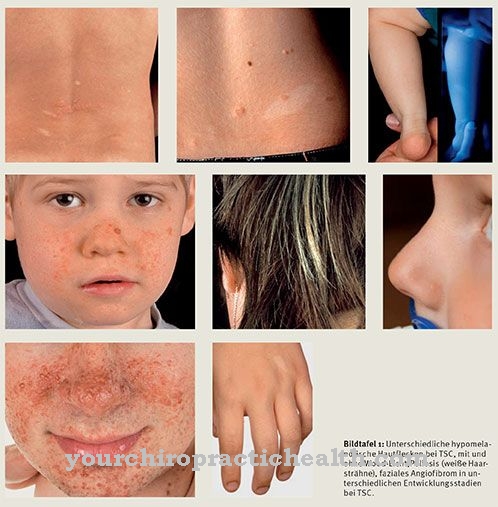

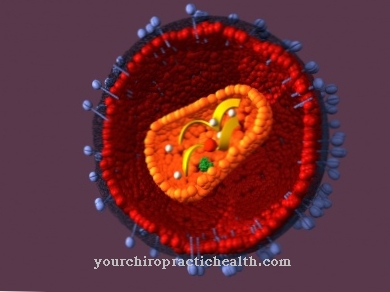




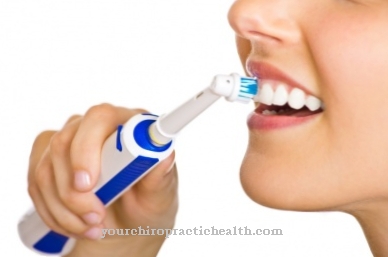


.jpg)
.jpg)

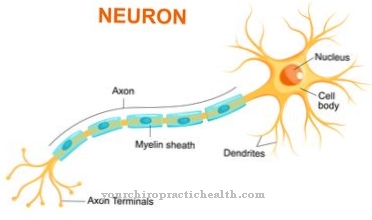
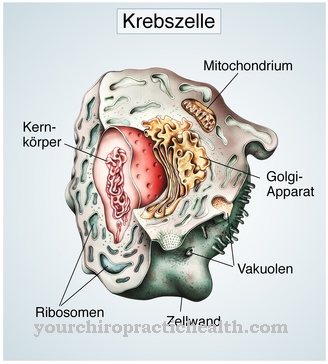
.jpg)



